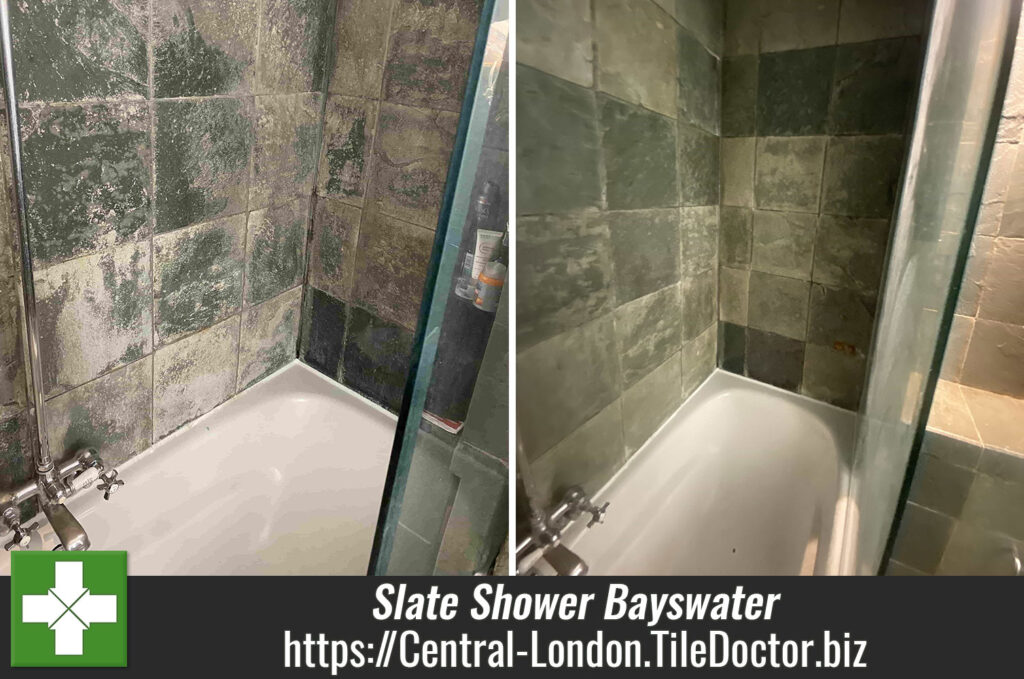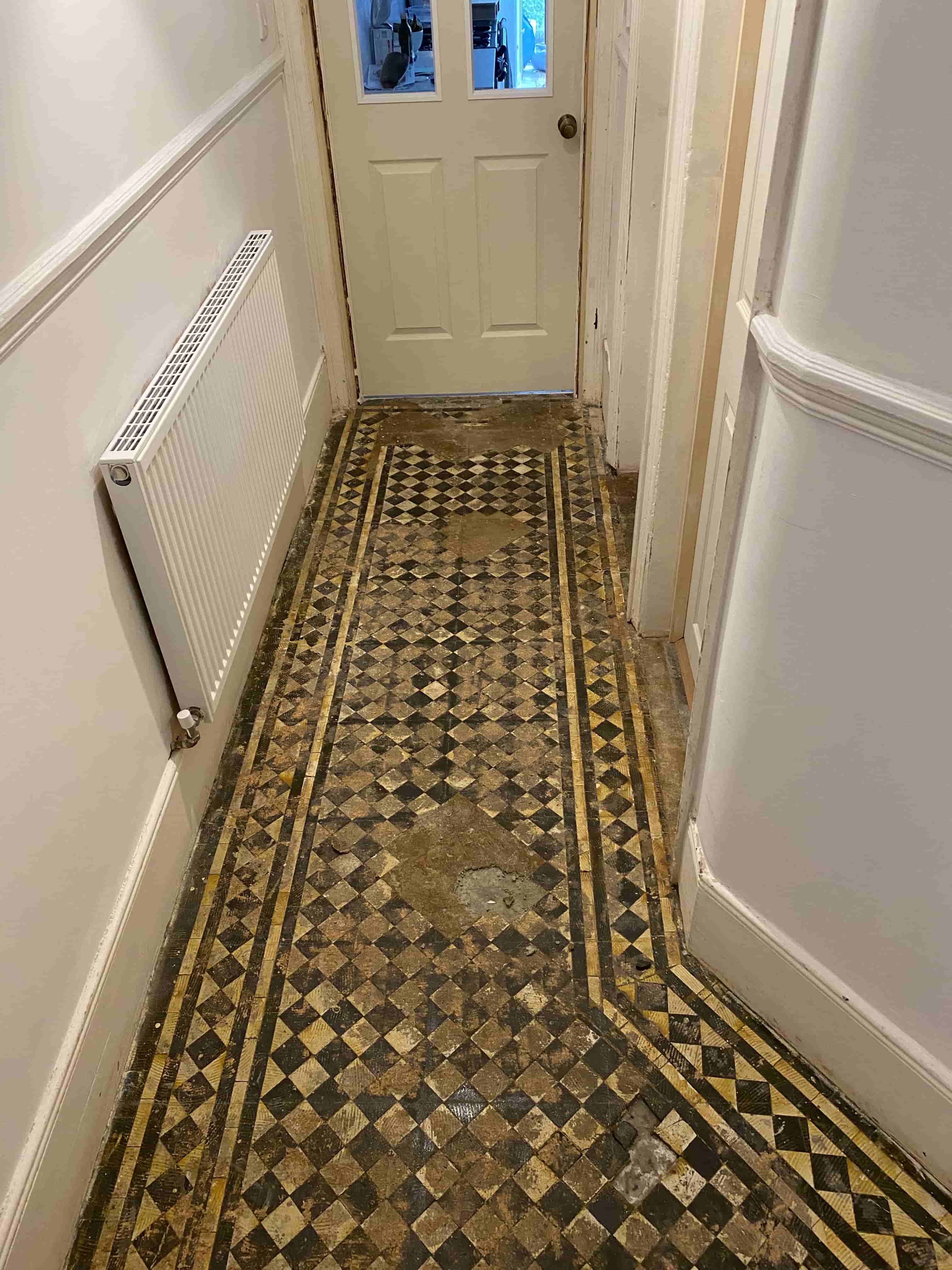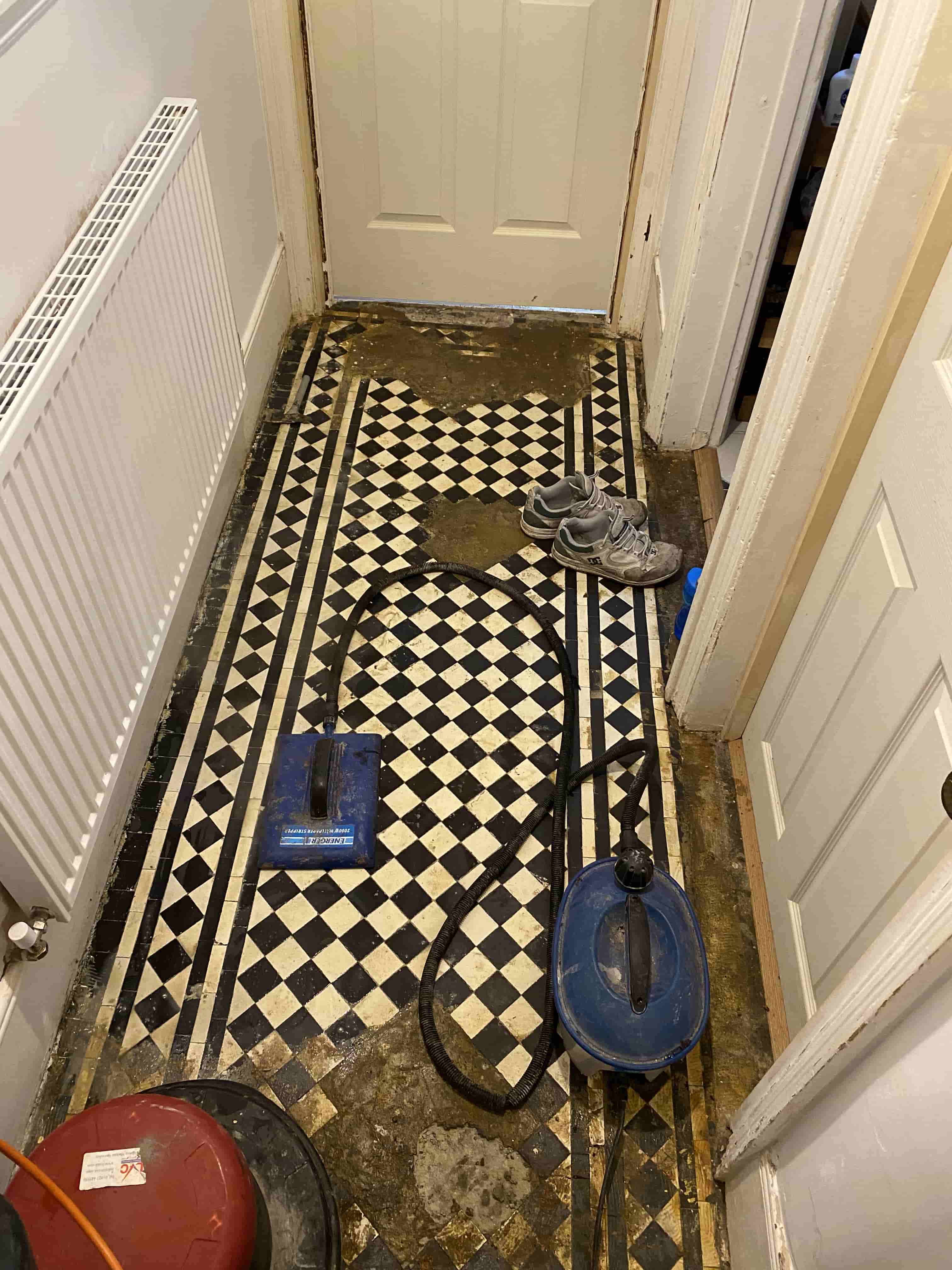Gruby Limestone Kitchen Floor Renovated in Marylebone
The pictures below are of a Limestone tiled kitchen floor at a property just off Marylebone High Street in Central London. My client has a dog, and years of walking back from Regents Park through West London streets back into the kitchen floor has led to it becoming very dirty.
Over the year the sealer had worn down and this had allowed dirt to become lodged in the natural pits that are common with Limestone. The dirt had then become ingrained in the stone turning it black in places and resulting in a very undesirable appearance. The other problem that can play a part here is dog urine which is naturally acidic (uric acid) and can weaken a sealer.

As usual I arranged a visit to the property to survey the floor and work out which method and products would be best for renovating it. From that I was able to work out an accurate quote for its renovation and later I emailed a quotation across to my client which was accepted.
Cleaning a Limestone Tiled Kitchen Floor
To get the floor clean I started by spraying a strong dilution of Tile Doctor Pro-Clean onto the Limestone tile and grout and left it to soak in for ten minutes to give it time to break down the dirt. Then the floor was thoroughly scrubbed with a rotary floor buffer fitted with a poly brush, this was followed up with hand scrubbing with Tile Doctor Pro-Clean along the grout lines. The floor was then rinsed with water and all the soiling extracted with a wet vacuum.
To further refine the appearance of the limestone a 400-grit diamond encrusted burnishing pad was run over each tile using water to lubricate. After another rinse and extraction with the wet vacuum the process was repeated with the finer 800-grit pad. My client didn’t want a high shine, so I finished on the 800-grit pad and gave the floor another rinse.
Sealing a Limestone Tiled Kitchen Floor
The floor was left to dry off overnight and the next day I returned and dry burnished the floor with a 3000-grit pad to improve its appearance even further. Dry burnishing is done using only a few drops of water and leaves the floor completely dry and ready for sealing.
To protect the now clean Limestone tile and grout from ingrained dirt it was sealed using Tile Doctor Colour Grow sealer which is an impregnating sealer containing a colour enhancing formula. A couple of coats were applied allowing thirty minutes of drying time between each coat. Impregnators work by occupying the pores within the stone thereby preventing dirt from taking up residence there.

The client was very happy with the work we carried out. We recommended the use of Tile Doctor Neutral Tile Cleaner which is pH neutral and will help maintain the floor and the newly applied sealant, it is mild enough to use daily, so will keep those muddy paw prints at bay!
Professional Renovation of a Limestone Tiled Kitchen in Central London
Gruby Limestone Kitchen Floor Renovated in Marylebone Read More »












